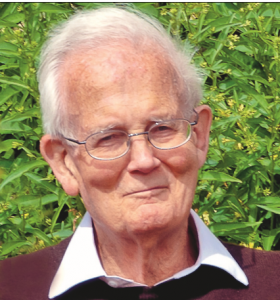
An essential ingredient of any well-found programme of research into organ transplantation is access to high quality histopathology. So there can be no greater endorsement of the value of Kendrick Porter’s work than the course of action followed for three decades by one of America’s foremost transplantation pioneers. Although separated from Porter by several thousand miles, Thomas Starzl, then of the University of Colorado and now Distinguished Service Professor of Surgery at the University of Pittsburgh School of Medicine, invited him to undertake most of the microscopic and other pathological examinations of the key experimental and clinical material generated by his ground-breaking transplant programmes.
The origins of this relationship lie in a 1963 organ transplantation conference attended by both men. Having heard Starzl describe his progress in renal transplant surgery, Porter asked if he could visit him in Denver to examine his pathology specimens. The visit took place at a time when Starzl was writing the first textbook on kidney transplantation. He invited Porter to contribute a chapter on the pathology of the procedure. Porter agreed, subject to being granted access to Starzl’s library of specimens. “That started a traffic of tissue transfer between Denver and London that lasted for the next 30 years”, says Starzl. The chapter that Porter wrote was later published separately as a monograph. “It was the state of the art of kidney transplantation pathology”, Starzl insists. “And today, if you ask any honest pathologist, that chapter still is the state of the art.” A similar set of events, and another book chapter by Porter, followed Starzl’s entry into liver transplantation.
“Ken really was the world expert on transplanted human organ pathology”, says John Bradfi eld, Emeritus Professor of Histopathology at the University of Bristol. He knew Porter fi rst when a student and later as a colleague at St Mary’s Hospital Medical School in London. “Ken was a meticulous observer”, he says. Terry Cook, another student at St Mary’s and now Professor of Renal Pathology at Imperial College London, points to Porter’s early experience as an experimentalist. His research career took off in the 1950s when working with Cambridge surgeon Roy Calne, who was then studying renal transplantation in dogs. He began to document the fi ne detail of the arterial and glomerular changes in transplanted kidneys. “At that time nobody knew what was going to happen in a rejected transplant”, says Bradfield. “It was experimental. No one had done it before.”
Apart from a couple of house jobs, 2 years of National Service in the Royal Air Force, a year or so at Harvard (where he worked with transplant pioneer Joseph Murray), and a year in a sanatorium with tuberculosis, Porter spent almost all his working life at St Mary’s Hospital. He graduated from its medical school in 1948, returning in 1952 as an assistant lecturer, and being awarded a Chair in Pathology in 1967. “He taught me about the importance of experimental pathology and of the role of the pathologist in thinking about disease processes”, says Cook, who attributes his choice of career to Porter’s influence. As Bradfield concedes, “Pathology is not necessarily the most attractive subject for students who want to be doctors looking after patients. Ken made it interesting and was able to show how important it is. He was a kind and accessible mentor.”
Porter also embarked on a project to enlarge his medical school. With funds from the Variety Club of Great Britain and the Wellcome Trust he turned St Mary’s into a centre for experimental pathology. Bradfield talks of Porter’s high standards and his meticulousness; Cook of his interest in trying to create a kind of unity in his department. “Every morning at 10:30 the whole department, everyone from the professor to the lab technicians, was expected for coff ee in the seminar room. Porter was slightly reserved but always approachable.” Starzl’s praise for his long-term collaborator is fulsome. “He had a unique talent. The care and intelligence that he invested in his studies was amazing. He created transplantation pathology. He was a scholar in his own right, but very unselfish, and willing to fi t in as a piece of the pie.” In retirement Porter diverted that care to the maintenance of his 7-acre garden. He leaves a second wife, Jane, three daughters, and four sons. All the latter have entered medicine.
© Elsevier